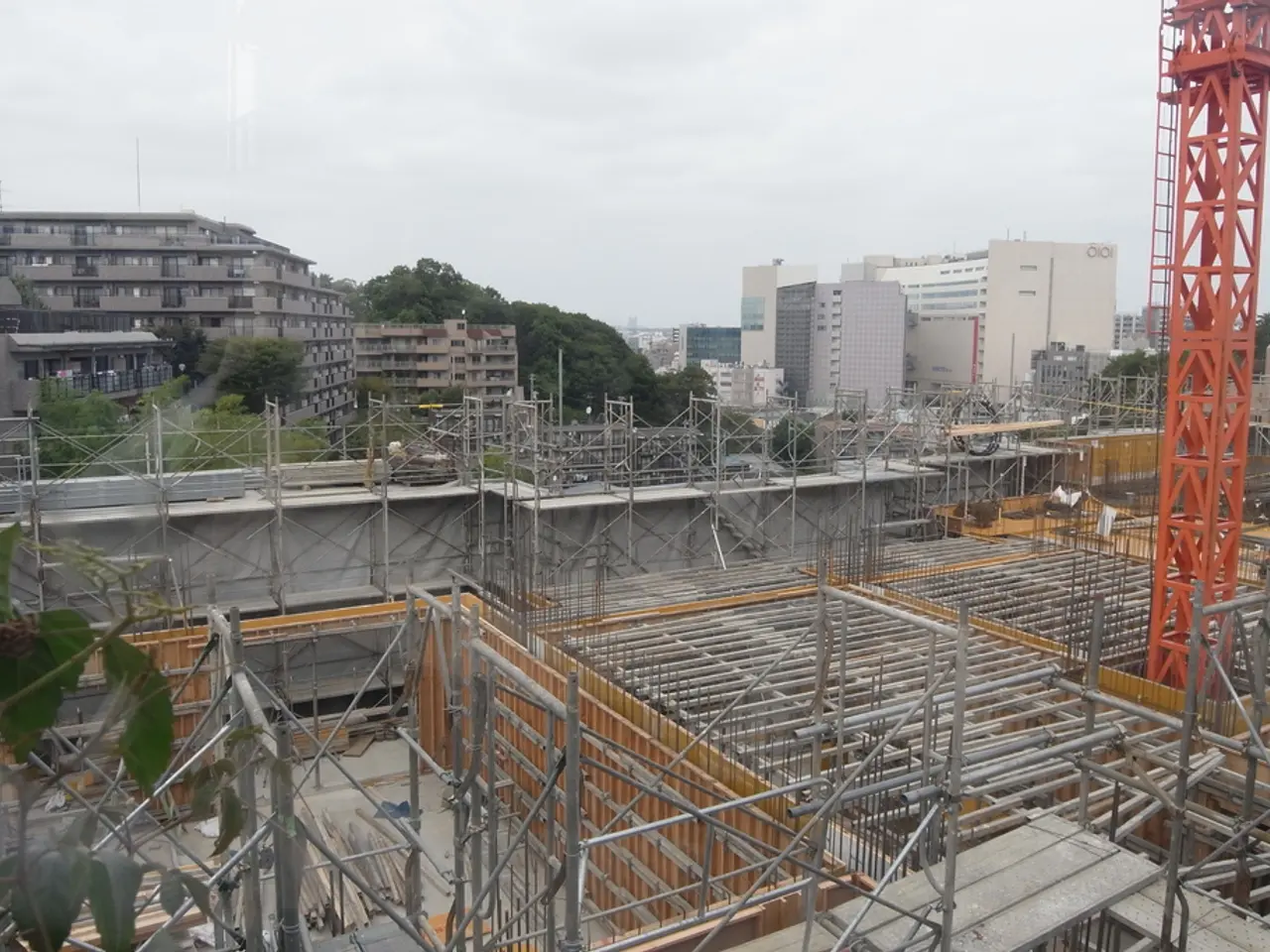Reconstruction efforts in France restarted, focused on preserving a medieval tower, spearheaded by German expertise in technology.
The historic tower of Thevray in Normandy, France, has been preserved for centuries and attracts attention due to its unique design. Declared a historic monument in 1886, the tower is now a residential building and serves as an example of a restoration that combines historical substance and modern technology.
The tower, originally part of a defensive complex, has had to deal with rising damp, a common issue for many historical buildings. This problem arises when water seeps into the masonry through fine pores and cracks. To combat this, a functioning horizontal barrier was needed to prevent moisture from rising, a feature usually present in new buildings but often missing or ineffective in older structures.
Enter the German company Veinal and their special injection system, Veinal VSS 1-90, designed for sealing masonry against rising damp. This method involves introducing a silicone resin solution into the masonry through drill holes, which hardens and forms a water-repellent layer. This approach, used to seal the masonry of the tower, is suitable for solid walls and is relatively clean.
The injection method, which creates a horizontal barrier within one to two days and avoids damage by refraining from using pressure, was advantageous in Thevray Tower's renovation. Some areas were only accessible from one side, such as in the staircase, making the injection method a practical choice because it does not require large-scale interventions.
The measure meets the requirements of the Scientific-Technical Working Group for Building Preservation and Monument Conservation (WTA) and has been confirmed effective by testing authorities. Veinal offers a manufacturer's guarantee of 20 years for the barrier.
The renovation of Thevray Tower could serve as a model for retrofitting horizontal barriers in protected historical structures, as there are fewer practical examples in France compared to Germany. The tower of Thevray was saved thanks to the now functioning horizontal sealing and the special injection procedure used.
Compared to other methods of horizontal sealing for heritage buildings, the injection technique offers a practical balance. It preserves the historic fabric with minimal disturbance while effectively cutting moisture ingress horizontally. This approach is often preferred in heritage conservation when the masonry’s integrity and original materials must be retained as much as possible.
In general, injection methods allow targeted treatment of damp problems without dismantling walls, unlike some traditional horizontal sealing techniques which require significant structural alteration. This precision, combined with advances in chemical formulations tailored for historic masonry, makes injection sealing a favorable option in many heritage restoration projects. However, effectiveness depends on correct application, masonry condition, and ongoing environmental factors.
The walls of Thevray Tower consisted partly of solid bricks and partly of mixed masonry with a thickness between 40 and 60 centimeters. The Paris architectural firm Urban Stirnberg accompanied the renovation of Thevray Tower. Around 20 meters of masonry were treated during the first construction phase of Thevray Tower's renovation. Today, Thevray Tower stands as a testament to the successful blend of preservation and innovation in the field of heritage conservation.
Read also:
- Industrial robots in China are being installed at a faster rate than in both the United States and the European Union, as the global market for these robots faces a downturn.
- Hyundai N affirms transition to hybrid performance-centric models, initiating with Tucson N
- Stock markets in India anticipated a moderate opening, influenced by mixed signals from global markets.
- EV Charging Network Broadens Reach in Phoenix, Arizona (Greenlane Extends Electric Vehicle Charging Infrastructure in Phoenix)








